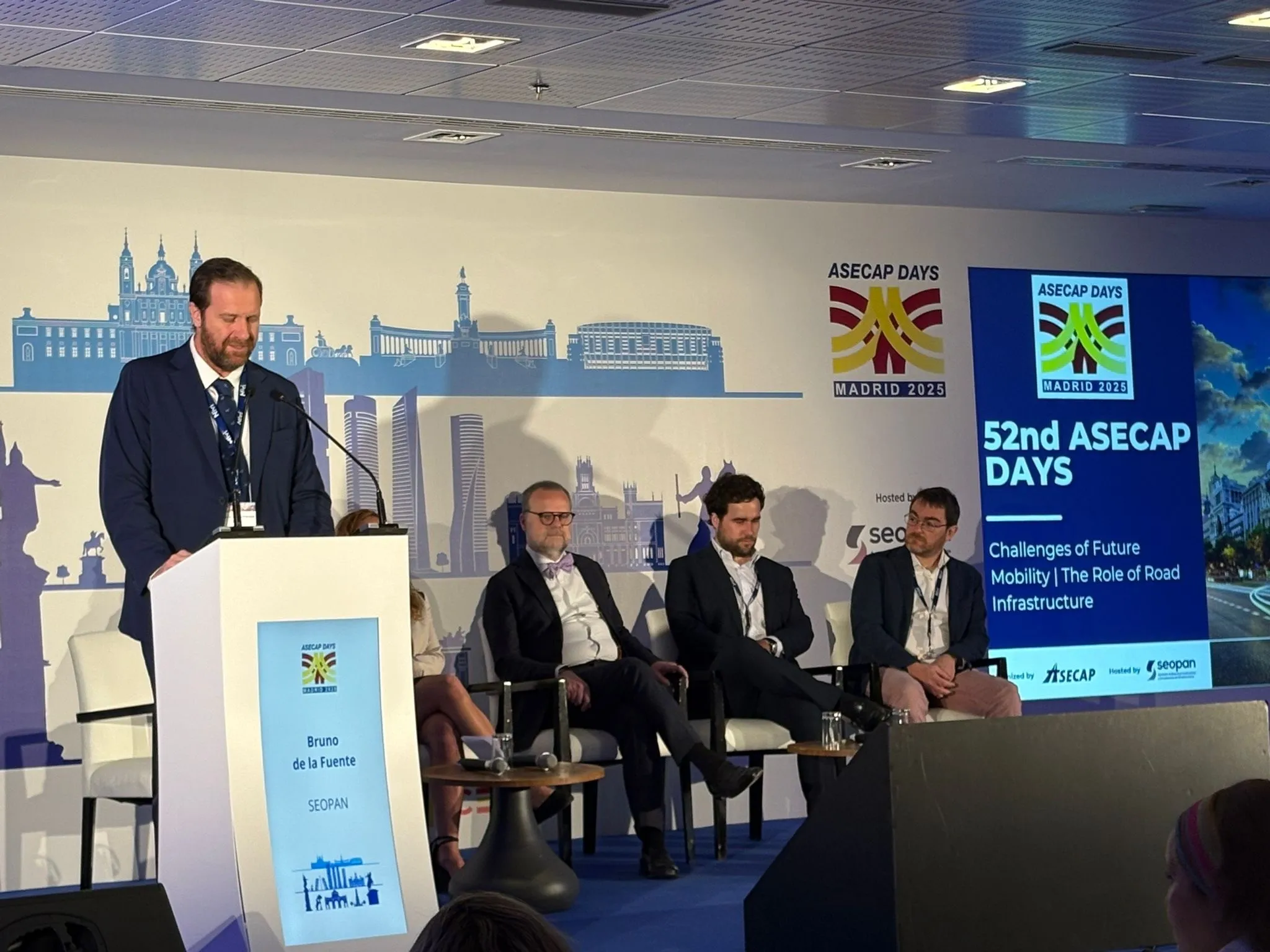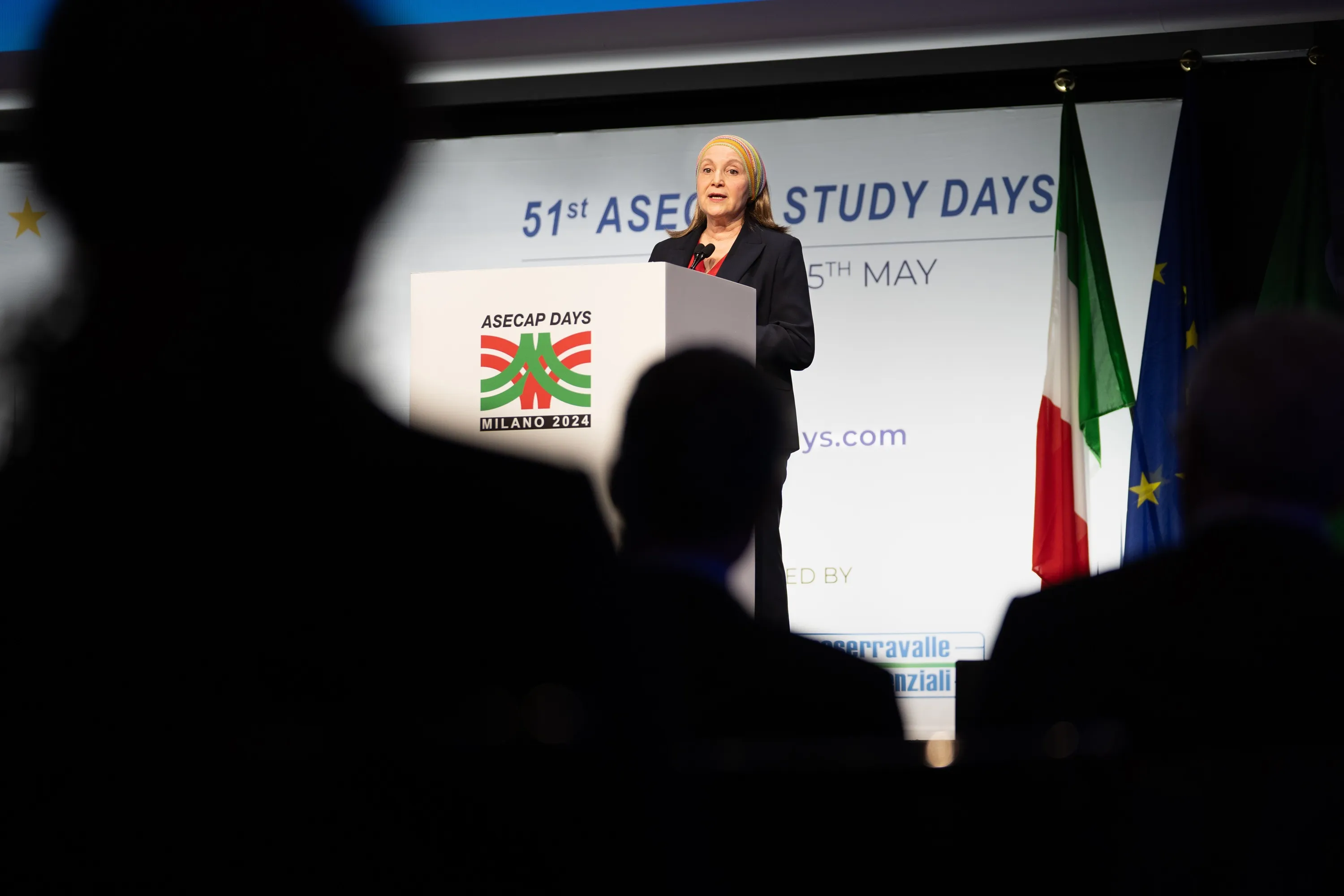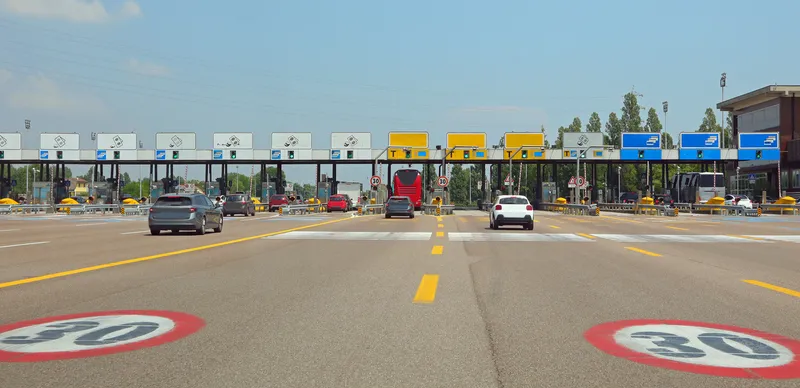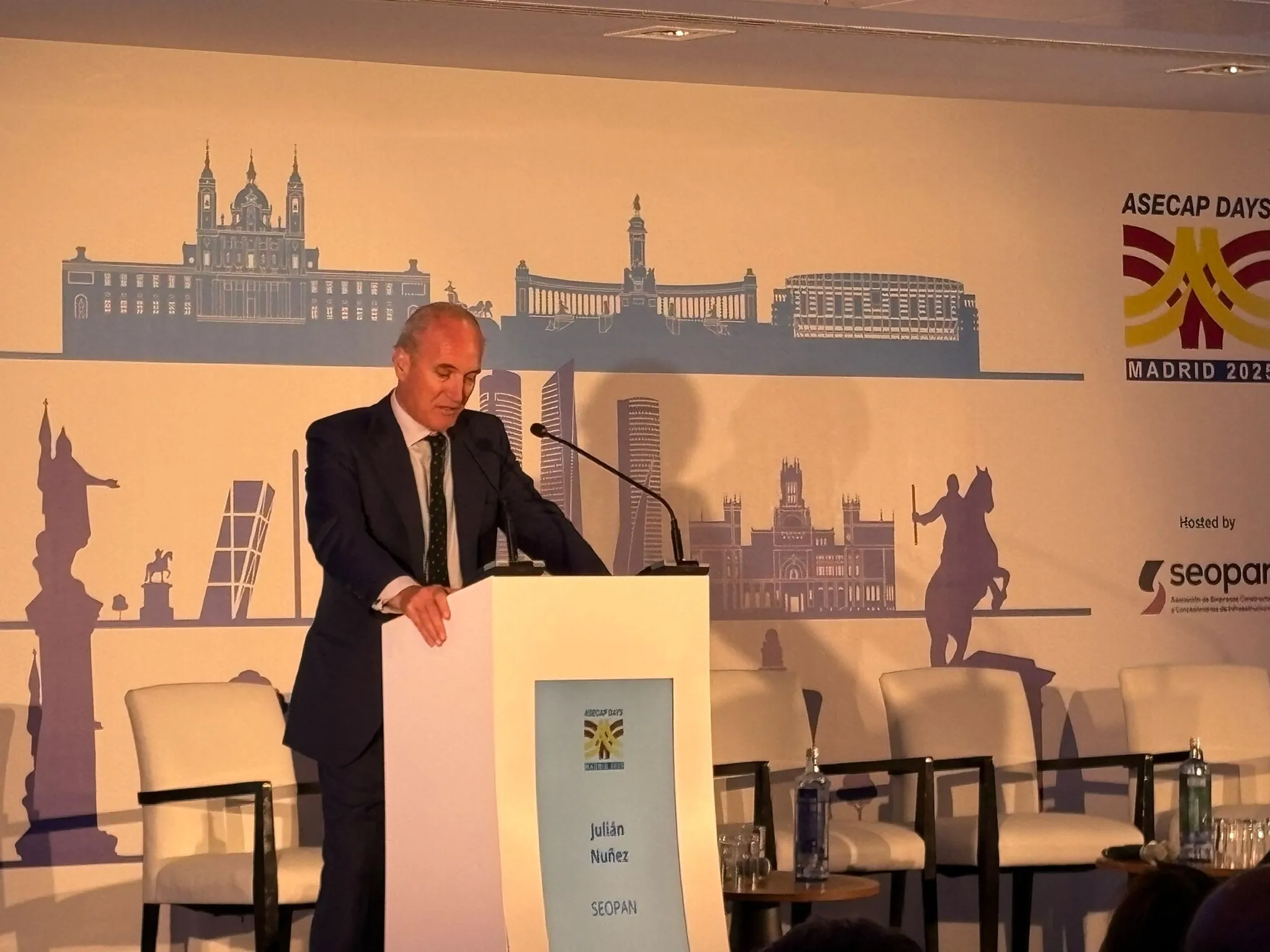
The three ‘C’s for all motorway concessionaires in Europe in this day and age of mobility change is communicate, communicate and communicate.
Decarbonisation and road safety are the two main targets for concessionaires, said Konstantinos Koutsoukos, president of Asecap, the European association of toll road operators.
Climate change is affecting all infrastructure, including roads, he noted during his opening remarks to the 400 delegates gathered in the Spanish capital Madrid.
There are risks that need to be mitigated, more resilience built into roads and more innovation with partners to keep road users and road maintenance workers safe. But a report just commissioned and published by PWC noted that the cost to do this will be nearly €72 billion over the coming years.
Toll road operators are more important now than ever before, Koutsoukos said - but this needs to be communicated to all parties, especially governments which are coming under financial pressures like never before.
Motorway operators – concessionaires – are at a key moment in a mobility revolution. They are having to pivot from being simply a company that moves people and goods along a stretch of road to being a major player in the shift towards different mobility types and expectations.
Investment in EV charging for all type of vehicles, reducing carbon emissions and reaching zero fatalities requires an increasing amount of investment. This is at a time of governments having to face more financial challenges, from boosts in defence spending, more spending on social safety nets and greater healthcare needs, as well as environmental concerns.
With this in mind, said Julian Nunez, president of Spanish toll road operator Seopan – and past president of Asecap – toll roads are even more important to a nation’s financial – as well as social – health.
Across the Atlantic, in the US, getting the message across to governments that toll road operators are more needed than ever before is a constant challenge. There are moves in the US, said James Hoffman, president of IBTTA, to open up the 980mHz frequency spectrum – the one most used by concessionaires as they move towards more connected technologies – to more users.
A warning came from Jose Manuel Vassallo, professor at the Universidad Politecnica de Madrid, that roads are losing the battle for the attention of politicians as they struggle with financial demands from other sectors.
They have to see that properly managed toll roads contribute financially to national prosperity. They allow for the continued movement of goods and people under the user-and-polluter-pays systems.
He suggested the concessionaires should consider more graded tolling structures, taking into consideration vulnernable road users and users in poorer parts of a country.
The situation in Portugal should be a warning to other concessionaires in other European countries, said Manuel Ramos, executive director of concessionaire Brisa. Around 74% of Portugal’s motorways are tolled. But the government took back round 800km from the concessionaires and took them off tolling. It was a political move, popular in some parts of the country. The government is now looking at ways to reimburse the concessionaires for this loss.
In what might appear to be an ironic move, the European commission is considering exempting zero-emission vehicles from tolls in an effort to move towards decarbonisation goals. This is nonsense, said Benoit Le Bret, a partner in the law firm Gide and who has acted for the European Union as well. The problem is that zero-emission vehicles are not zero polluters. Meanwhile, concessionaires will get less tolling revenue but still have to maintain safe roads.
Charge it, please
Pilot projects on the dynamic road charging of vehicles – in particular heavy goods vehicles, intercity logistics trucks - are well underway by some of the concessionaires, noted Thomas Malagie, from Vinci Autoroutes in France. For two projects on the A10 motorway near Paris, Vinci has teamed up with Electreon - which is supplying induction technology - and Elon Road, which is handling conduction systems. Both are on the verge of starting, one in June and the other in September, he said.
For the passenger car, Vinci is already well ahead with all of its 180 service stops on its motorways now having EV charging. The statistics show that Vinci Autoroutes had 50 charging points for every 100km of its managed motorways. At the moment, though, despite the fact that battery technology is improving, he believes that the immediate future at least for large trucks is for charging-as-you-drive technology – sometimes called dynamic wireless power transfer.
Some of the questions for concessionaires and highways agencies, too, said Valerio Apicella, from ITS solution provider Movyon, is just how long in kilometres should such a roadside and embedded system be. One kilometre? 10km? And how many sections will be needed and how far apart? These systems are very expensive to construct, likely will be hard to maintain - and what will the return on investment for a concessionaire?
However the technology develops, said Bruno Weill, from French concessionaire APRR, there will have to be extensive and early involvement with all partners involved in such dynamic charging.
This is especially true concerning the grid companies and power suppliers. There will probably need be a lot of algorithmic and artificial intelligence used to understand what amount of power is likely needed and when: how much AC and DC power will be needed, and when it is more likely that truck will use a recharging systems – requiring much more power than passenger vehicles.










